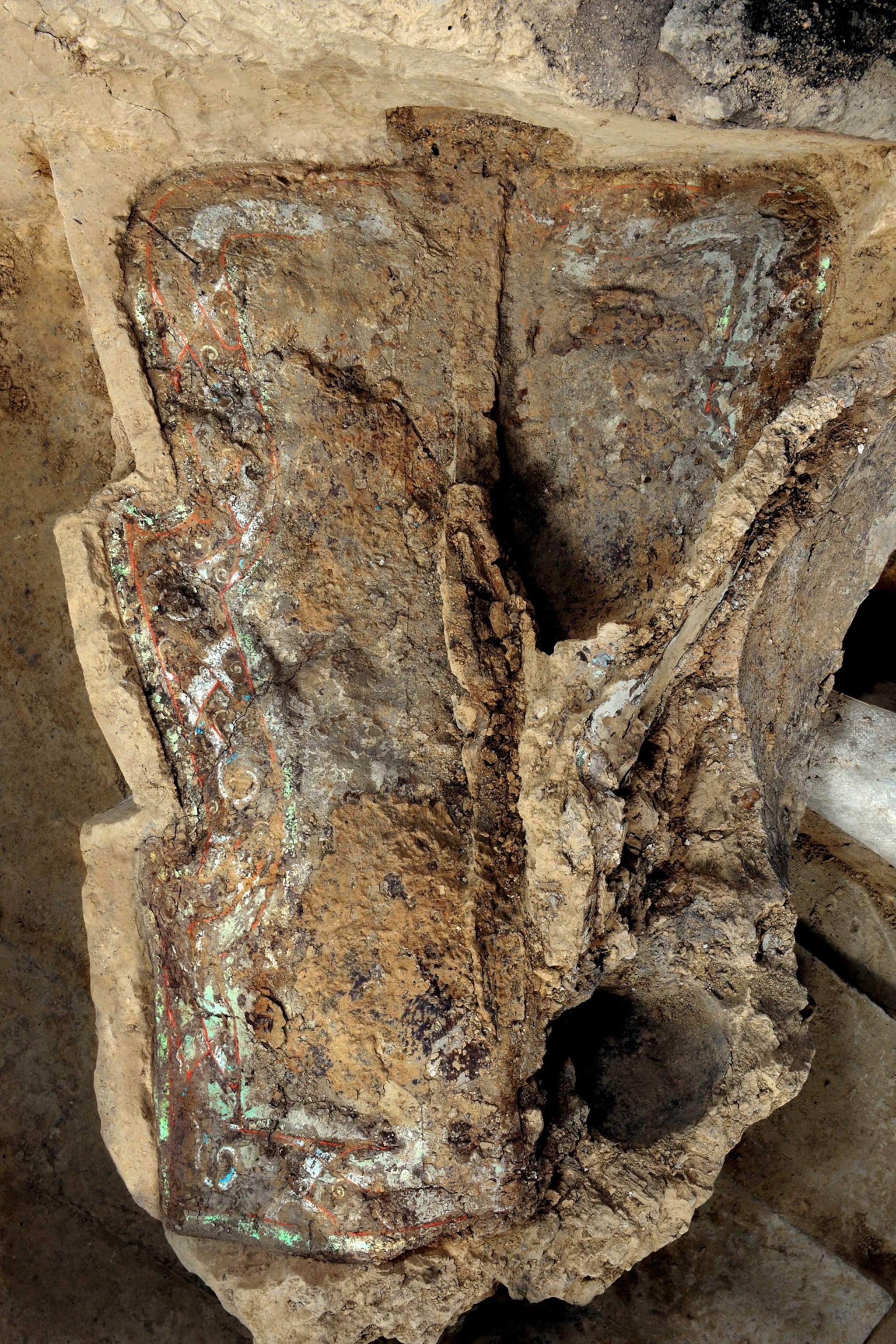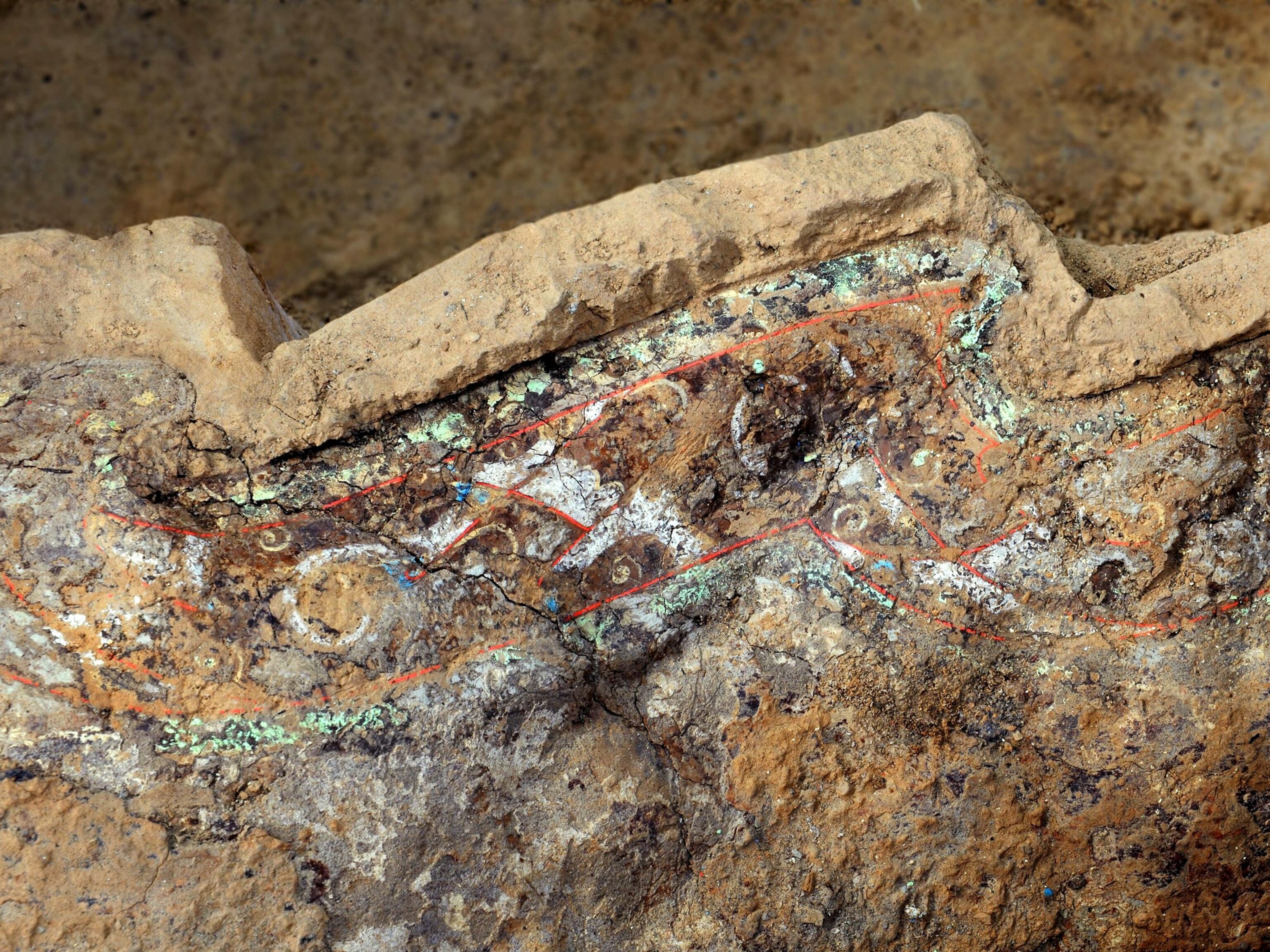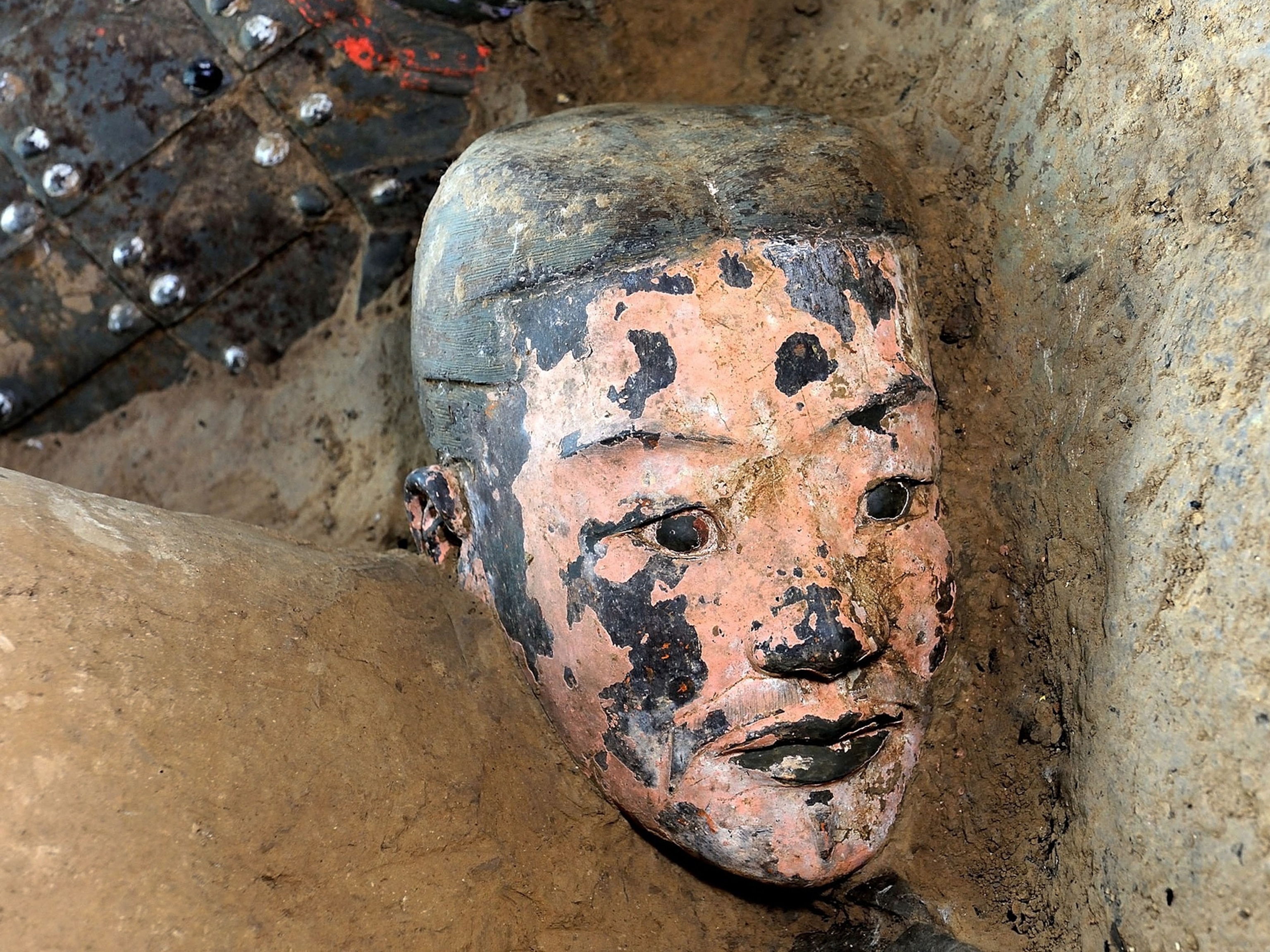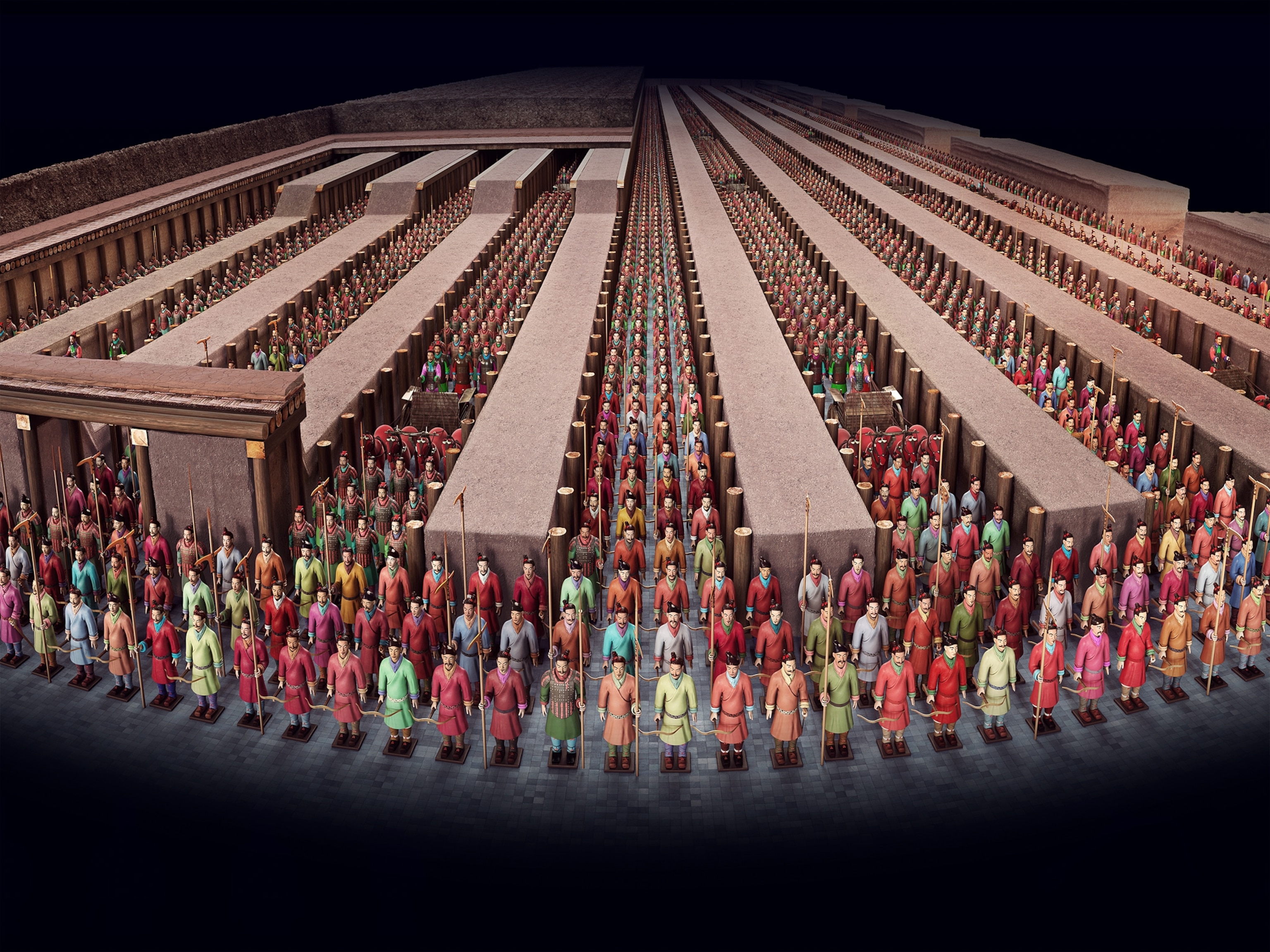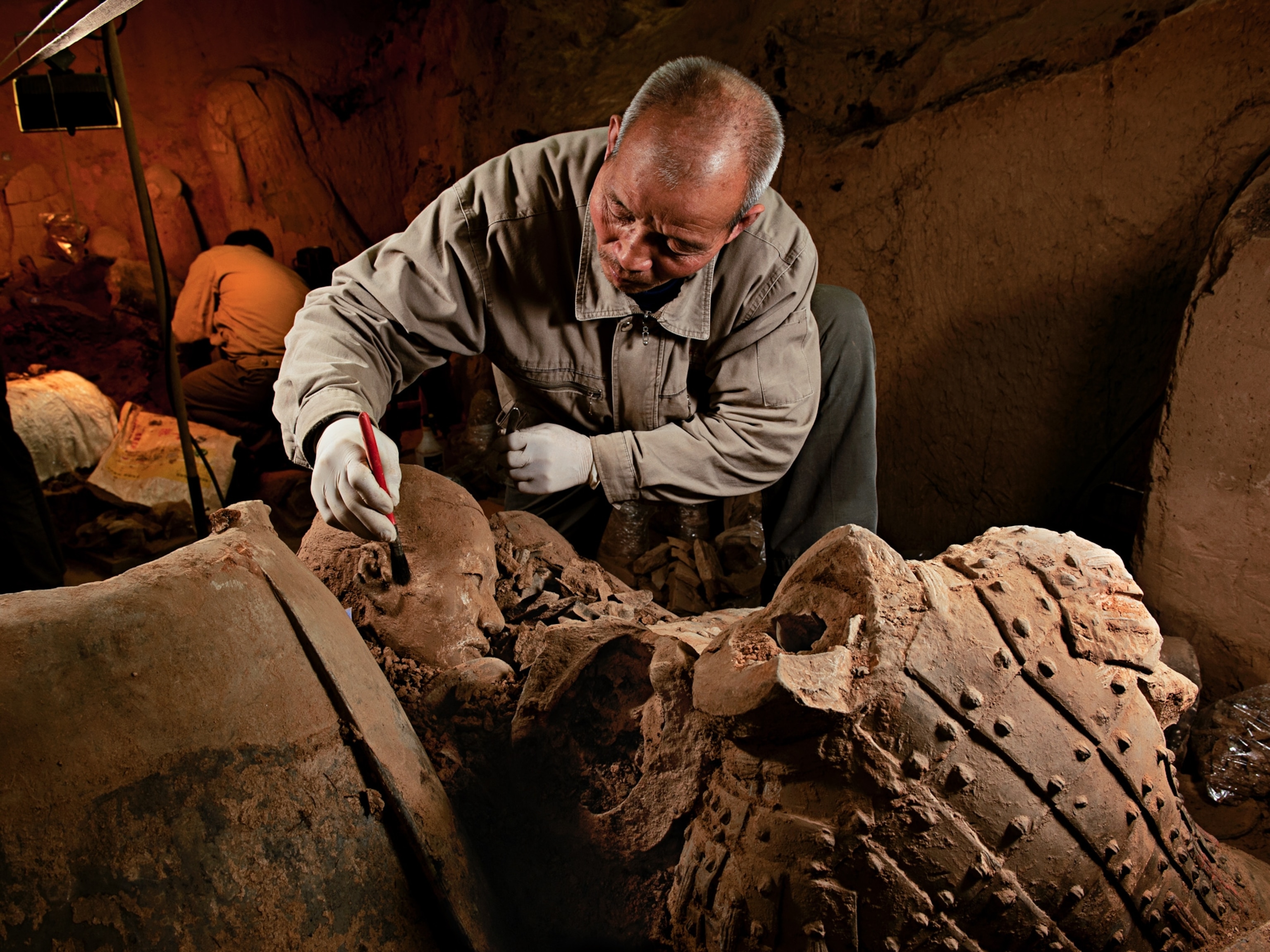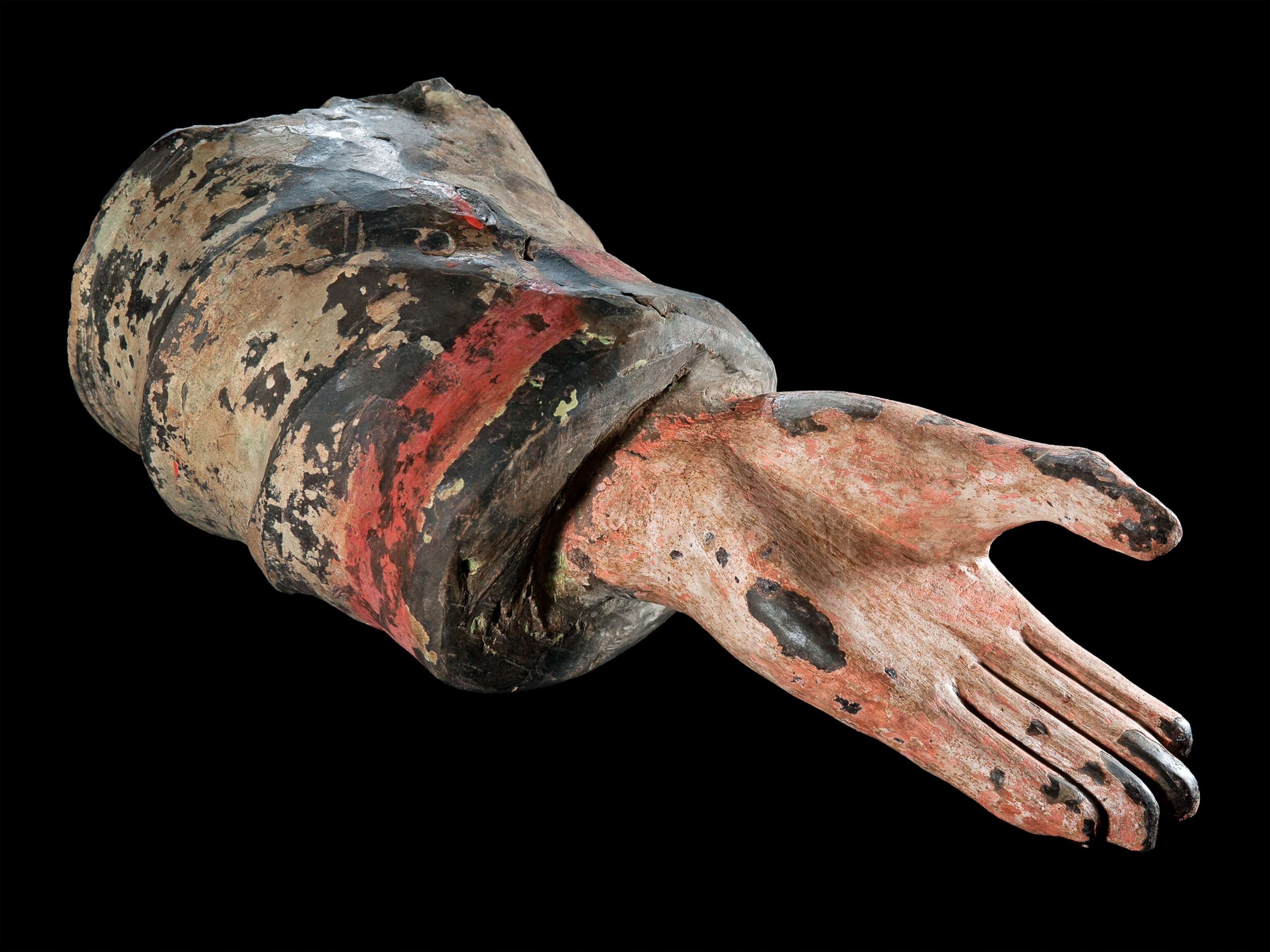1 of 11
Photograph by Ruan Banhui, Imaginechina/AP
Pictures: New Terra-Cotta Warriors—And Unprecedented Armor
Dozens of new terra-cotta warriors have emerged from the burial of China's first emperor—along with the site's first known shield.
June 20, 2012



